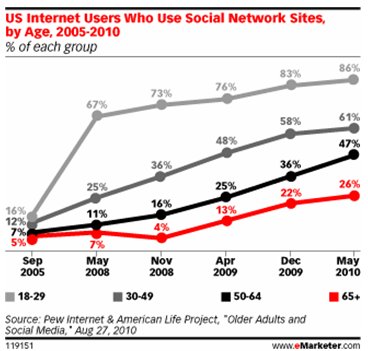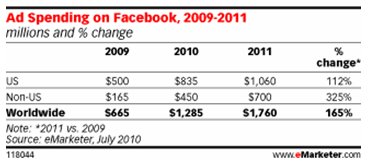
These rates are fairly close to eMarketer predictions from April 2010, which estimated the largest jumps in social networking site usage would occur among the oldest users.
With even seniors catching the wave of social networking, the phenomenon’s mass appeal is undeniable for marketers. Facebook announced its 500 millionth user in June, and marketers have begun to pour real dollars into the channel. eMarketer estimates US ad spending on Facebook will rise to $1.1 billion next year, up from $835 million in 2010.

Pew offered three reasons for social networking’s appeal to older adults:
•They want to reconnect with people from their past.
•As a gathering place for multiple generations, social networks are useful to parents for learning about the lives of their children and grandchildren.
•People with chronic diseases are more likely to reach out to others online, and older people are more likely to have a chronic disease.
But those first two reasons are also a good indication of why young people may begin shying away from Facebook and having conversations elsewhere, if they haven’t already. Already hyper-vigilant about their privacy and what they share, young users may stop considering social networks cool when their parents join—let alone their grandparents.
Meanwhile, as teens and millennials grow up and enter the work force, instead of reconnecting, they may actually want to disassociate themselves from past immaturities and prying eyes in what is an increasingly public setting.
The mass appeal of Facebook is a boon in the short term for marketers looking for reach in an age of media fragmentation. But as the site tries to be everything to everyone, marketers included, that may prove to be too much for some, just as it was for MySpace.





